Whether spinning tracks in your bedroom or rocking parties at packed clubs, a quality DJ controller unlocks a world of musical creativity.
But with countless controller options at different prices, how do you pick the right one?
Let’s break down the key criteria to make sure your controller choice checks all the boxes.
How to Choose the Right DJ Controller
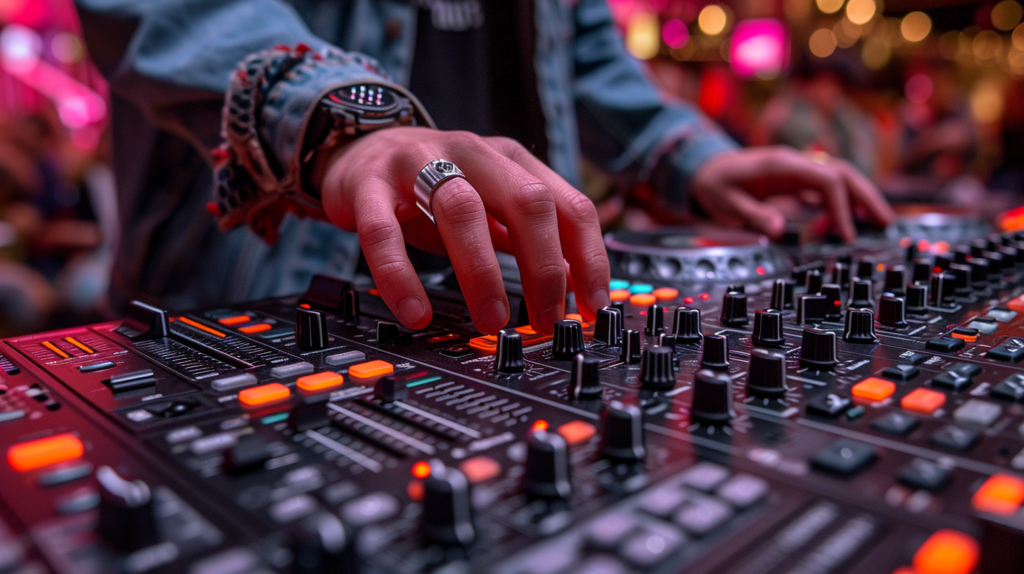
When investing in DJ gear, following a buying guide ensures you choose equipment that enables your creative goals rather than hinders them.
We’ll explore the key factors around budget, software, portability and features in detail below. But first, define how and where you want to use a controller. Setting intent upfront narrow down the perfect pick.
Determine Your Budget
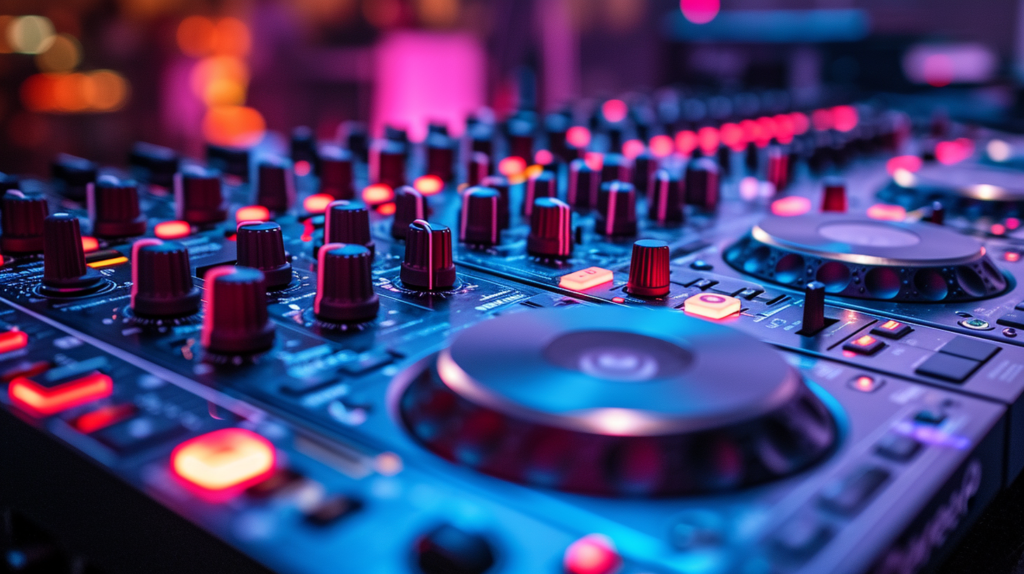
When deciding which DJ controller is right for you, the very first thing you need to determine is your budget.
DJ controllers have huge variability when it comes to price, with entry-level controllers starting around $200 going all the way up to advanced, professionally-oriented controllers costing over $1,000.
It’s important to set a firm budget range before you start browsing different options.
As a general guideline, most beginner/bedroom DJs will want to stay in the $200 to $500 price range.
This category is good for people just getting started, allowing you to learn the basics without a huge upfront investment.
If you already have experience DJing and want to play live events or take your skills to the professional level, you’ll want to look at advanced controllers in the $500 to $1,000+ range.
These offer better build construction, bigger jog wheels for cueing/scratching, more advanced features like performance pads, and better integration with DJ software.
Keep in mind that the controller itself is just one part of a complete DJ setup. Especially if you’re a beginner, be sure to leave room in your budget for any accessories you’ll need like headphones, speakers, cables, headphone splitters, travel bags, laptop stands, etc.
Knowing your total budget will narrow down your options and help choose equipment that works together.
Decide Which DJ Software You Want to Use
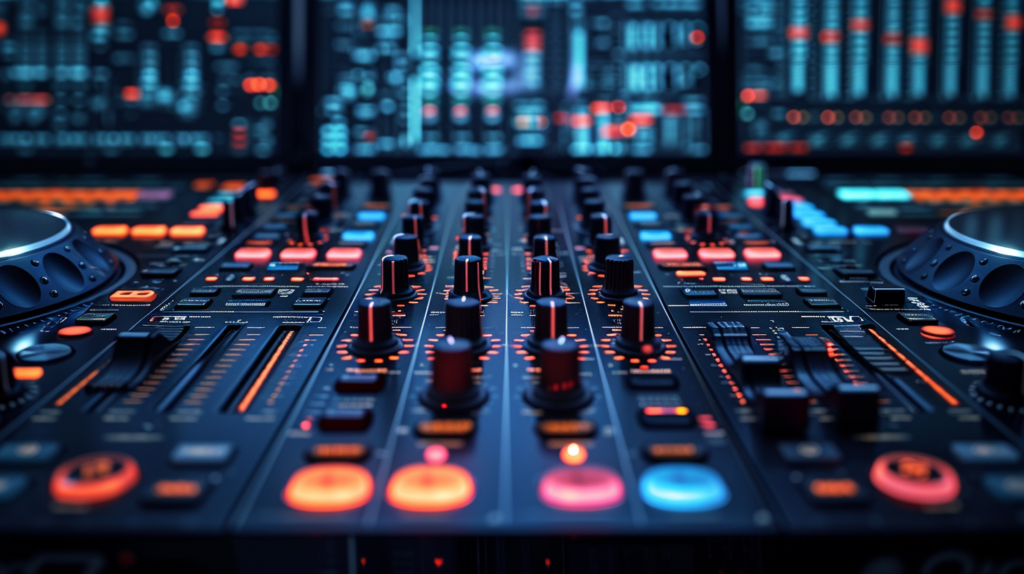
In addition to the hardware of the controller itself, one of the biggest factors that can impact your options is DJ software compatibility.
The controller directly controls functions and effects within DJ software like Serato, Traktor, Rekordbox, Virtual DJ, and others. As such, some controllers only work directly with specific DJ software or brands. Do your research ahead of time to find controllers that will integrate smoothly with your software choice.
Serato and Native Instruments’ Traktor tend to be two of the most common and full-featured professional DJ software options.
If you know you want to use one of these, look at controller compatibility during research. Software choice also impacts library management, visual displays, built-in effects, sampling capabilities, and other performance features.
Those using DJ software for the first time might consider a controller/software bundle that comes pre-configured and mapped for the best experience.
Advanced users that already own a DJ software license can choose from a wider range of controllers to meet their needs.
Just make sure integration works, either through official pre-mapping from the manufacturer or by taking the time to manually configure controller settings within the software yourself.
This extra research is worthwhile to gain access to all effects parameters and software controls.
Consider the Type of DJing You Want to Do

Before buying any gear, it’s a good idea to think about how you plan to use your DJ controller. Will you primarily be a bedroom DJ playing for your own enjoyment and learning at home?
Or do you plan to play live events like parties, weddings, performances at clubs or bars? Different types of DJing require specialized controller features and connectivity options.
For home practice and playing music in your bedroom, focus on controllers that offer the basics – jog wheels, play/cue buttons, mixing knobs – in a simple and portable form factor.
Look for controllers compatible with your computer or tablet to keep things light and mobile, along with basic software integration at an affordable price. On the other hand, if you plan to DJ live events as a performing DJ, that opens up more serious gear to consider.
Bigger jog wheels are easier to scratch and cue up tracks in loud club environments and the build quality stands up better to transport and heavy use.
Performance features like larger platters, pad banks to trigger samples or hot cues, and filter/FX knobs offer more creative options in a live setting.
Look for advanced controllers offering premium connectivity, standalone mixer functionality, and universal DJ software capability for the most flexibility playing different gigs.
Thinking about your goals and use cases upfront will make sure you choose equipment that is purpose-built for your needs as a DJ just starting out all the way up to playing main stage sets in front of big crowds.
Consider where you want to take your DJ journey when investing in a controller.
Choose Your Compatibility

In today’s connected digital world, you have quite a few options when it comes to pairing your controller hardware with compatible devices.
Laptops were traditionally the device that DJs used with their controllers to host software and access music libraries.
However, other options like tablets, iOS or Android smartphones, even DJ apps that don’t require an external device are now on the market.
Be sure to consider what device ecosystem you plan to use with your controller when researching options to ensure seamless connectivity.
Most controllers these days use a wired USB connection to integrate with laptops and PCs. Make sure your laptop has enough free USB ports if you plan on plugging directly into your computer.
Higher-end controllers may offer additional connectivity like MIDI over Bluetooth for wireless pairing with phones/tablets.
If going the mobile DJ software route, look for controllers that don’t require a laptop at all and have apps or DJ software built directly into the hardware.
Also consider if you want to DJ with two devices simultaneously, as some controllers offer dual device pairing. Knowing what type of device setup fits your needs makes sure you get off on the right footing when purchasing a controller.
And remember to budget for any adapters or extra cables/hardware needed for full integration. The key is finding a controller tailored for the platform you want to DJ with that offers the most seamless, lag-free signal transmission between software and hardware.
Determine the Size That Works for You
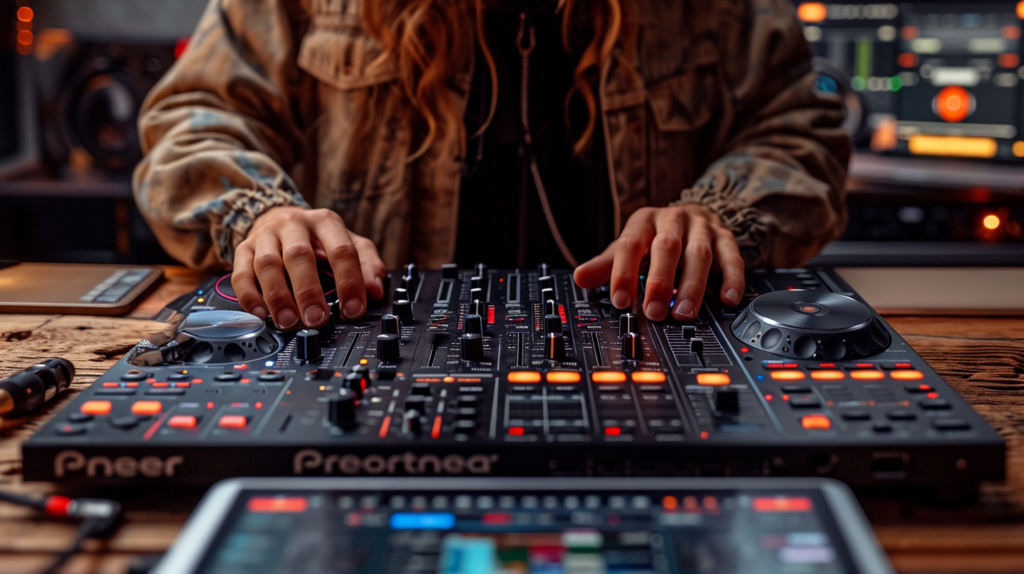
DJ controllers come in a wide variety of sizes and form factors. Smaller controllers are extremely portable for mobile DJs or those with limited space.
On the other end of the spectrum, larger controllers offer an expanded feature set but are less portable. Consider the tradeoffs between size and functionality:
For true portability, some of the smallest options are compact controllers in a MIDI fighter-style layout focused just on essential controls in a condensed size.
While they provide transport and some cueing functions, the barebones controls are best for simple mixes or as creative MIDI controllers in the studio rather than primary DJ rigs.
Tablet-sized mini controllers offer a bit more functionality in a size you can toss in a bag for mobile DJ usage. All-in-one controllers have a built-in audio interface so you can plug in a mic, headphones, speakers etc without needing extra gear.
While convenient, the size makes them harder to transport compared to a simple MIDI controller. For professional mobile DJs doing events, look for specialized small-format gear that’s highly portable but offers premium club-style controls similar to club-standard gear.
On the larger end, there are full-sized desktop controllers providing a full experience similar to a club DJ booth layout. While not as portable, these units excel for permanent home studio setups and offer bigger platters, expansive mixer sections with EQs and filters, and more advanced controls.
High-end 4 channel club mixers give you a professional standard club-ready standalone mixer with integrated controller functions for the full pro DJ experience. The tradeoff is their heavy, bulky size and premium price.
For serious scratch DJs that need the feel of real turntables, look into full-size controller turntable units that emulate the layout, controls, and torque of traditional vinyl decks. While the closest experience to traditional vinyl DJing, the size does limit mobility compared to smaller controllers.
Evaluate your personal priorities between portability and maximum functionality when considering controller size and footprints. Desktop controllers offer the most options for permanent home setups, while mobile DJs are better served with small all-in-one and mini options that easily fit in a bag.
Compare Features and Effects

Once you’ve narrowed down your options by budget, compatibility, size and intended use, it’s time to compare the specific features and controls different controllers offer. While entry-level controllers stick to the basics required for mixing, many come with extra capabilities for creativity:
Jog Wheels & Platters
Look at the jog wheel size, latency, tension adjust, and whether they’re touch sensitive for scratching vs. just cueing tracks. Bigger wheels feel more realistic for advanced DJ techniques.
Faders and Mixer Controls
Faders should slide smoothly for accurate mixing. Check for individual channel trim/gain knobs, EQ knobs, headphone cue buttons, and crossfader adjustments for blending songs.
Performance Pads
Pads trigger hot cue points for jumping to parts of songs on the fly. Some controllers have pad banks that enable more sophisticated controls via drumming-style finger drumming.
Effects Controls
Many controllers come with buttons to engage FX like Echo, Flanger, Phase, etc. Advanced controllers offer more parameters for deep manipulation, customization and combining multiple effects.
Displays and Meters
Some controllers incorporate playback info, FX levels, mixer levels and more on built-in displays vs. needing to look at your laptop. Helpful for visual feedback when performing live.
Mic Inputs
If you want to talk over mixes as a DJ or incorporate a mic for MC duties, having a dedicated mic input is extremely helpful so you don’t have to unplug other gear.
Touch Strips
Some controllers offer touch strips for dynamic song and effect manipulation by sliding your finger across sensors vs. turning a knob or hitting a pad.
Seeing the types of controls that are available will help identify capabilities that match your style and experience level when choosing a controller.
Go for the basics as a beginner, then upgrade to take advantage of advanced functionality when you’re ready.
Read Reviews and Test In Person
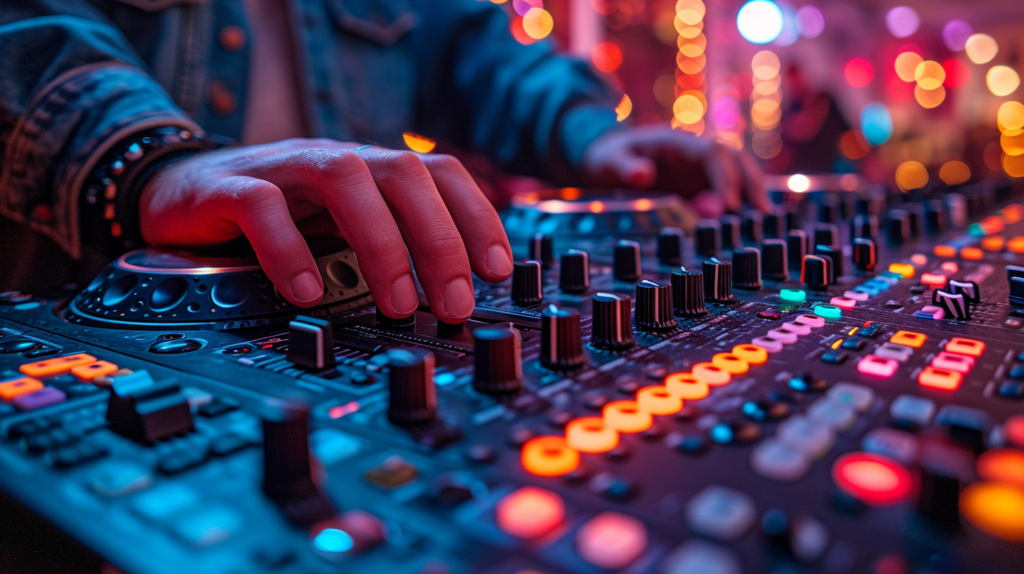
Once you’ve researched different controllers and narrowed down options that meet your criteria on paper, the next step is validating your choice by reading reviews and testing gear out first-hand if possible.
Reviews from both expert sources and other buyers provide objective assessments and user experiences to inform your buying decision.
Try to read multiple reviews to identify any widespread issues vs. subjective individual opinions. Testing controllers at a local music store allows you to feel build quality, platter/jog wheel responsiveness, effects manipulation, and overall workflow.
While not always possible if stores don’t carry DJ gear locally, hands-on testing can expose poor design ergonomics or cheap-feeling buttons in a way spec sheets can’t convey.
Combining thorough review research with direct in-person validation will help choose a controller that looks great on paper and excels with real-world usability.
If tests confirm positive experiences that match the needs outlined through your earlier research process, then you’ve found an optimal controller choice to match your budget and DJ aspirations!
Conclusion
Choosing the right DJ controller can seem overwhelming at first glance due to the many factors to consider.
By first clearly defining your budget, use case, software needs, and must-have features, you can narrow down the perfect controller to match your goals, space, and wallet.
Taking time to read reviews and test options in person further validates that your decision checks all the boxes before buying.
Investing thoughtfully upfront ensures your controller enables creativity rather than stifles it. So embrace the process and let your DJ dreams come to life!
